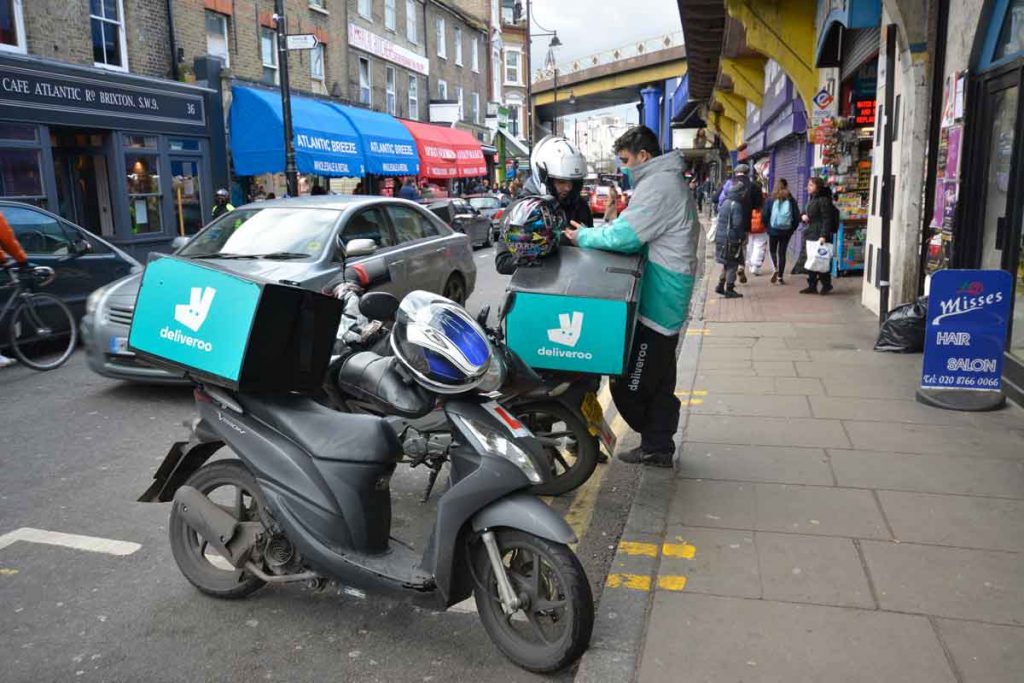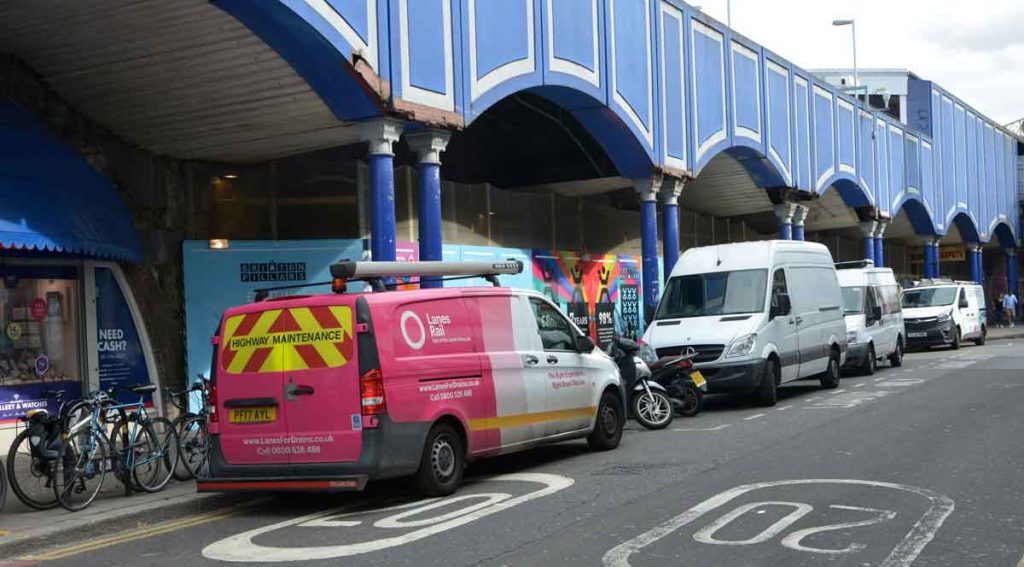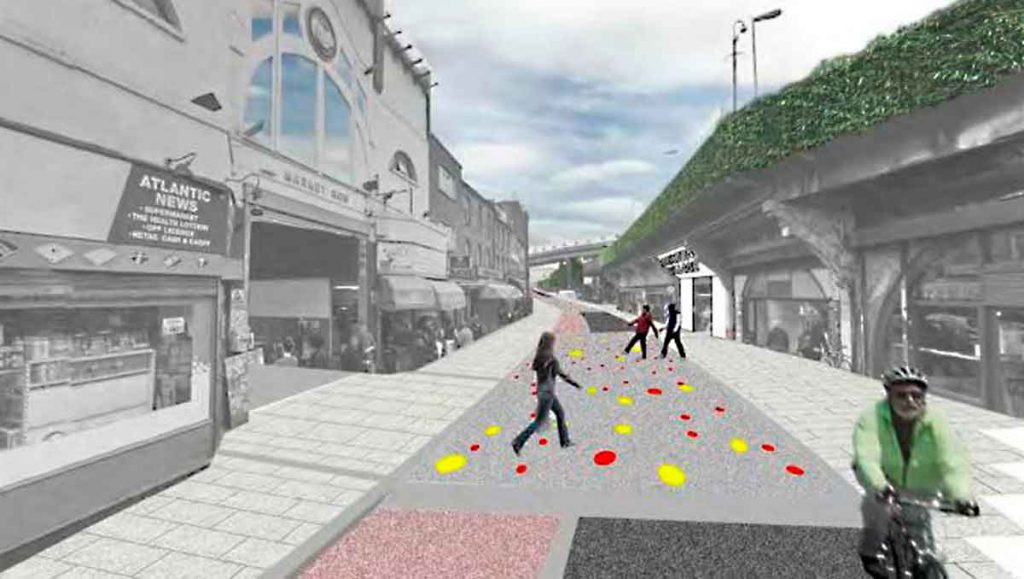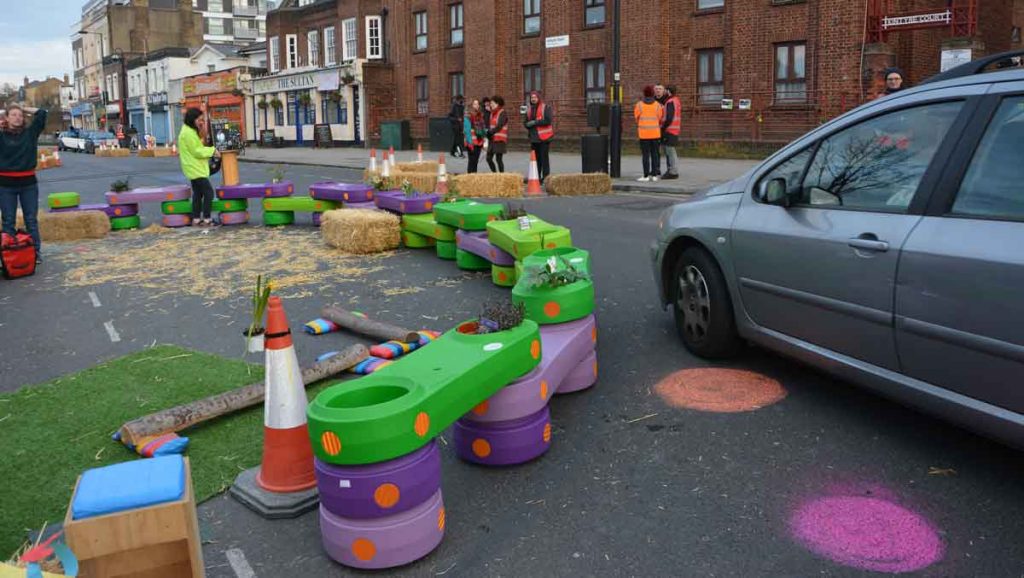
Atlantic Road in Brixton is to be “transformed” to benefit people walking, cycling and using buses with funds from the Liveable Neighbourhoods programme run by Transport for London and the mayor of London.
Brixton will get a share of more than £50 million funding for projects under the scheme.
TfL said that local freight access in Atlantic Road will be maintained with technology used to better manage loading and servicing.

The new investment will overhaul public spaces, widen footways and add new pedestrian crossings, “creating a much more welcoming environment for the area’s many visitors, residents and businesses”.
The project will build “high-quality infrastructure” on three “strategic” cycle routes: Brixton to Clapham Common, Brixton to Camberwell and Brixton to Herne Hill.
“Low traffic” neighbourhoods will be created in the Ferndale Road and Railton Road neighbourhoods and there will be a new, fully segregated cycle route linking Brixton to Loughborough Junction.

Mayor of London Sadiq Khan said: “For too long streets around London have been designed solely around cars and motor traffic. Our £50 million investment will transform neighbourhoods and local town centres in inner and outer London, making them cleaner, greener and more pleasant places to spend time.
“Working with these boroughs to make our streets more welcoming for walking and cycling is vital for our health and wellbeing, but also essential for the future vibrancy and success of London’s local high streets.”
London boroughs will contribute an additional £40 million to the whole project.

Computer generated image of the ‘transformed’ Atlantic Road
Local London Assembly Member Florence Eshalomi, a Brixton resident, said she was delighted that Lambeth council’s bid for funding had been successful. It would help to transform and rejuvenate Brixton, “vastly improving the public space and providing much safer and easier routes for cyclists and pedestrians to navigate”.
She said that reducing car use in the community, wherever possible, “plays a significant role in tackling air pollution and encouraging local people to adopt healthier lifestyles.
“As a lifelong Brixton resident, navigating the roads around Atlantic Road can be like an assault course, with pedestrians sometimes being forced to walk in the road and constant traffic jams due to cars not giving way for delivery vans and the buses.
“For too long, our high streets, town centres and neighbourhoods have suffered from government underinvestment, so it is very positive that City Hall is working to turn the tide on the years of neglect.”
Claire Holland, Lambeth council cabinet member for environment and clean air, said: “We are committed to making our roads safer for everyone – particularly our young people – to get around by walking and cycling, to improve both people’s health and our toxic air, so this funding from the Mayor of London and TfL is fantastic news.
“We have looked long and hard at how to improve Brixton’s transport system in a way that makes the roads safer and cleaner but also keeps things moving.
“Improving local neighbourhoods so that they are no longer dominated by car traffic and enabling people to travel more safely and actively, is at the heart of this project.
“Prioritising those that are walking, cycling or using public transport addresses all of these things and will be beneficial for local residents and businesses and make the centre of Brixton a much healthier, more attractive destination.”
Colin Penning of Lambeth Cyclists said the borough had long claimed to want to be the most cycle-friendly borough and that the liveable neighborhood plan would be a big step towards making that a reality.
“More importantly,” he said, “this isn’t just for people on bikes. Low-traffic neighbourhoods mean cleaner air and better conditions for walking too.
“A higher quality environment in central Brixton is great news for independent traders, with better walking and cycling links to other centres bringing in more customers.”
Penning said that previous schemes to limit cars on Lambeth roads had proved controversial. Schemes in the Loughborough Junction area and New Park Road had not been area-wide schemes, had not “repurposed” the road space and did not link shopping and social centres.

“Making walking and cycling easier, and driving short trips harder, is not gentrification. More than 60% of Lambeth households do not have access to a car and this figure is highest higher among the poorest in society.
“Safer, quieter streets provide places where children can play again – again that’s far more important for poorer households who don’t have private outdoor space.”
Penning said that transport is the largest contributor to UK carbon emissions.
“Trips under five miles make up 19% of car emissions and those of five to 10 miles another 18%. Reducing car use, particularly for short trips of the sort driven in London, is crucial if we are to have any chance of hitting carbon targets.
“Cleaner air is a public health issue and Brixton has some of the worst air in London – and it affects children most.”







The main reason that the New Park Road scheme was not linked to the neighbourhood but appears to be due to the lack of support for any road calming initiatives by Lambeth Brixton Hill Labour Councillors. They consulted over 200 residents in 2017 but have yet to respond to those who were consulted or to publicly release their own report. Every year for the past two decades they have identified rat runs, dangerous and polluting traffic as the main local concern but in 19 out of 20 years failed to secure any funding. Every year they say they will secure funding ‘next year! Councillors routinely ignore any emails on the issue!
In the mean time tens of millions have been spent on the so called ‘town centres’ of Streatham, Brixton, Clapham and Stockwell.
As a Brixtionan, I have seen Atlantic road become more congested but why are we ignoring the real issue of bad road management which is the real cause. The re-development of Brixton central has caused main routes to bottleneck (by design) thus pushing traffic onto smaller streets. The cost cutting by the council who have removed traffic wardens from actively clearing the roads and the lack of adequate parking for traders cause the use of loading bays over allotted time. Traffic is routed in a particular way to cause static traffic especially during rush hour with box junctions in the wrong place or not covering junctions, loading bays in-correctly positioned and lack of enforcement (using poorly positioned cameras or a reduction of parking for bike for hire schemes. Sort out the flow of traffic sort out the congestion.